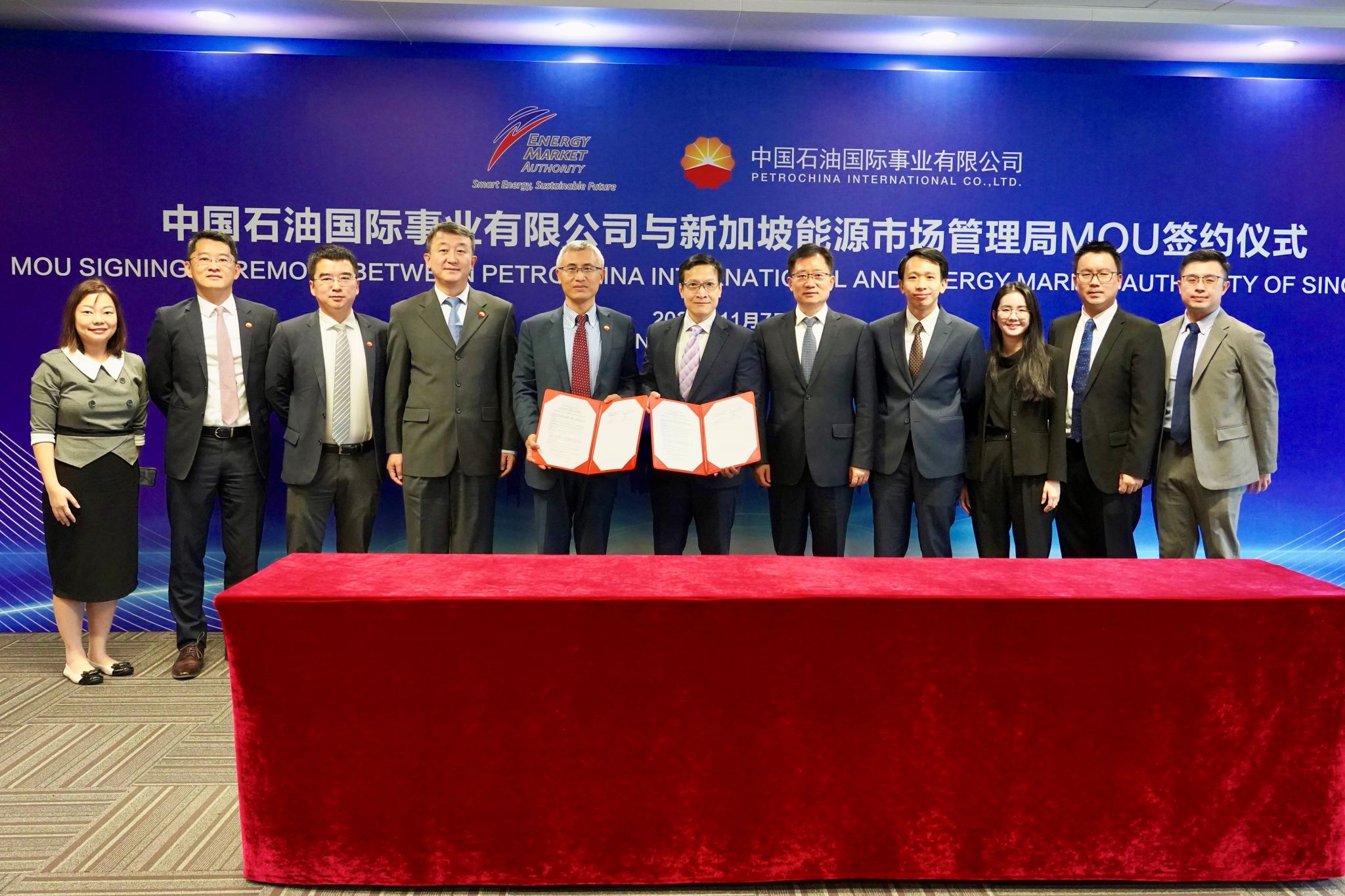This story requires a subscription
This includes a single user license.
EMA signed the memorandum with PetroChina International in Shanghai on Thursday.
According to EMA, the collaboration will help strengthen Singapore’s expertise and knowledge of LNG supply and management.
This is part of Singapore’s continued efforts to strengthen its energy security and resilience as the county explores alternative energy sources to decarbonize its power sector and meet the net zero emission target by 2050.
Under the MoU, EMA and PetroChina will explore collaboration opportunities to strengthen each other’s LNG supply chains, promote knowledge exchange regarding market dynamics, LNG supply and demand fundamentals, as well as evaluate joint procurement opportunities.
EMA and PetroChina will also study cooperation opportunities to support growing Singapore as Asian LNG hub, gas-to-power, and other sustainable development solutions for mutual benefits.
“While we explore various lower carbon energy sources, natural gas will continue to play a crucial role in safeguarding our energy security,” Soh Sai Bor, EMA’s assistant chief executive said.
“Our partnership with PetroChina will enhance our knowledge and expertise in the management and procurement of LNG supply, and also bring benefits to both parties through joint LNG procurement to secure better contract terms and pricing,” he said.
EMA recently signed another memorandum of understanding with South Korea’s Kogas to collaborate in LNG procurement.
In June this year, EMA and Kogas agreed to share best practices and knowledge on the procurement and management of LNG supplies and exchange personnel for training and learning purposes.
Two LNG terminals
Singapore’s first LNG terminal on Jurong Island, operated by Singapore LNG, began commercial operations in May 2013.
It currently operates with two jetties, three storage tanks of 180,000 cbm each, a fourth storage tank of 260,000 cbm, and a peak sendout capacity of around 11 mtpa.
Singapore LNG recently also signed a deal with Japan’s MOL to charter one FSRU for Singapore’s second LNG terminal.
The FSRU will be berthed at Jurong Port and will have a regasification capacity of 5 million tons per annum (mtpa).
It will boost Singapore’s regasification capacity by about 50 percent.
The FSRU-based terminal is expected to start operations by the end of the decade.

